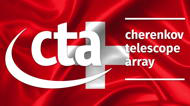Speakers
Description
In September 2010 the Crab nebula astonished the scientific community displaying 3 $\gamma$-ray spikes above few hundreds MeV. Despite this variability had been already predicted in 1998, it has been the very first time that was observed.
We have been the first to publish a paper analysing the INTEGRAL (20-500\,keV) and FERMI (0.1-300\,GeV) data. They were collected almost simultaneously to better understand the origin of this phenomenon. We divided the available data into three different sets (pre-flare, flare, post-flare) and performed timing and spectral analyses. We separated the $\gamma$-ray luminosity associated to the pulsar from the contribution of the surrounding nebula. In the hard X-ray domain, no significant variations in the pulse profile and spectral characteristics were detected. Conversely, we identified three separate enhancements in the $\gamma$-ray flux lasting for about 12 hours, matching to the synchrotron cooling time scale of electrons at an energy larger than $10^{15}$ eV. This might be the clear sign of the highest electron energy ever measured in a cosmic accelerator. We also confirmed that the $\gamma$-ray flare is not pulsed. The timing and spectral analysis have indicated that the $\gamma$-ray flare is due to synchrotron emission from a very compact Pevatron located in the region of interaction between the pulsar wind and the surrounding nebula. The flux enhancement, confined below $\sim$1\,GeV, can be modelled by a power-law with a high energy exponential cut-off, where either the cut-off energy or the model normalization increased by a factor of $\sim5$ relative to the pre-flare emission. The spectral properties of the flare has been interpreted in the framework of a relativistically moving emitter and/or a harder emitting electron population.
Since that event, many more random flares have been detected from the Crab nebula, roughly once per year. Despite being challenging, the observation of this source in the very low energy range of CTA could provide constraints in the emission regions and test the different models invoked to accelerate particles in the nebula at such energies. The same electron population could also interact with the less energetic photons (e.g. cosmic microwave background, near- and far-infrared, photon background fields, synchrotron emission) via inverse-Compton process, providing another $\gamma$-ray source of variability at much higher energies. Unfortunately, such radiation seems to be hardly detectable by CTA, because overwhelmed by the large nebula luminosity, except in the case of soft particle spectra ($\Gamma_e > 2.5$) and strong magnetic fields ($\sim$mG), which would allow re-acceleration of particles.
